EV updates
India’s New EV Policy: A Game Changer for the Passenger Vehicle Market and Auto Component Industry
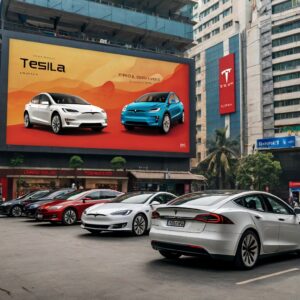 India’s automotive landscape is set for a dramatic shift with the introduction of a new Electric Vehicle (EV) policy. This policy is designed to intensify competition in the electric passenger vehicle (PV) segment and significantly benefit the domestic auto component industry. By lowering import duties and emphasizing localization, the government aims to attract global automotive giants like Tesla and Vinfast, thereby transforming the market dynamics. Analysts have weighed in on the potential impacts, indicating both opportunities and challenges for various stakeholders.
India’s automotive landscape is set for a dramatic shift with the introduction of a new Electric Vehicle (EV) policy. This policy is designed to intensify competition in the electric passenger vehicle (PV) segment and significantly benefit the domestic auto component industry. By lowering import duties and emphasizing localization, the government aims to attract global automotive giants like Tesla and Vinfast, thereby transforming the market dynamics. Analysts have weighed in on the potential impacts, indicating both opportunities and challenges for various stakeholders.
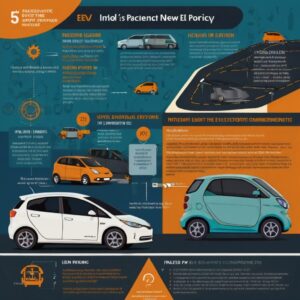
The New EV Policy: Key Highlights
The government’s EV policy is a multifaceted approach to boost the electric vehicle market in India. Here are the core aspects:
-
Reduced Import Duties:
- Automakers are allowed to import up to 8,000 EVs annually, priced at $35,000 or higher, at a significantly reduced import duty of 15%, down from the previous 70%.
- This concession is contingent upon the automaker committing to invest at least $500 million in local manufacturing over a specified period.
-
Localization Requirements:
-
The policy mandates a 25% domestic value addition (DVA) within the first three years and 50% within five years.
-
Companies must provide a bank guarantee to back their investment commitments, ensuring that the reduced import duties are justified by substantial local investment.
-
-
Market Penetration Potential:
-
Considering that India sold 42,000 luxury cars in 2023, the import allowance of 8,000 premium EVs per year at lower duties could lead to a market penetration of approximately 20%.
Implications for the Indian Market
The introduction of the new EV policy has several far-reaching implications for the Indian automotive market. Here’s a detailed look at these potential impacts:
Increased Competition in the EV Segment: The entry of international players such as Tesla and Vinfast is expected to significantly increase competition in the electric PV market. This new wave of competition will challenge domestic OEMs like Mahindra and Tata Motors, pushing them to innovate and improve their offerings. The mid-to-premium EV segment, in particular, is likely to see heightened activity, as these global brands bring in advanced technology and new models that appeal to Indian consumers.
Boost to Local Manufacturing and Auto Components: One of the primary objectives of the policy is to boost local manufacturing. By requiring a substantial investment in local production and setting stringent localization targets, the policy ensures that the benefits of global investments are shared with domestic industries. This focus on localization is expected to create significant opportunities for domestic auto component manufacturers, who will see increased demand for locally produced parts and advanced technology solutions.
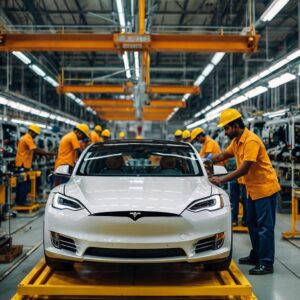
Consumer Interest and Market Dynamics: The policy is likely to attract considerable consumer interest, particularly for EVs priced at or below ₹20 lakh. Such vehicles are expected to appeal to a broad segment of the Indian market, driving significant growth in the electric PV segment. However, this increased competition could pose challenges for existing Indian manufacturers, who will need to enhance their value propositions to retain market share.
Expert Opinions on the New Policy
Analysts from various financial services firms have provided their insights into the potential impacts of the new EV policy. Here’s what they have to say:
-
Emkay Global Financial Services:
-
Emkay analysts believe that the policy ushers in a phase of both growth and uncertainty for the PV industry. The increased competition from international players will disrupt the market but also offer opportunities for growth. Domestic manufacturers will need to adapt quickly to remain competitive.
-
-
InCred Equities:
-
According to InCred analysts, the policy is particularly attractive for new EV makers like Tesla and joint ventures such as Mahindra-Volkswagen. However, it may pose a disadvantage to luxury brands like Mercedes and BMW, which currently import EVs at higher duties. These brands will need to rethink their strategies to compete effectively in the evolving market landscape.
-
-
Motilal Oswal Financial Services:
-
Motilal Oswal analysts suggest that the policy aims to foster an EV ecosystem and promote local manufacturing while protecting Indian OEMs operating below the $35,000 price point. Nevertheless, the policy could impact the sales of upcoming models from M&M and Tata Motors at the upper end of the SUV market and luxury vehicles from German brands.
-
-
Kotak Institutional Equities:
-
Kotak analysts believe that the immediate impact on the domestic market will be minimal due to the high price points of imported EVs and the annual import cap. However, the long-term competitive intensity is expected to rise, with domestic players needing to step up their game in the electric vehicle segment to compete with global entrants like Tesla.
-
The Road Ahead: Challenges and Opportunities
While the new EV policy opens up several opportunities, it also presents challenges that various stakeholders will need to navigate. Here’s a closer look at these aspects:
Opportunities for Growth and Innovation: The policy provides a fertile ground for innovation and growth. Domestic OEMs and auto component manufacturers can leverage the increased focus on localization to develop new technologies and improve production processes. This can lead to the creation of more affordable and efficient EVs, which will further drive market growth.
Challenges for Domestic Manufacturers: Domestic manufacturers will face significant challenges as they compete with well-established global brands. These challenges include the need to invest in new technologies, enhance production capabilities, and improve the overall value proposition of their EV offerings. Companies that can successfully navigate these challenges will emerge stronger and more competitive in the global market.
Potential Impact on Luxury Vehicle Market: The policy could disrupt the luxury vehicle market, particularly for brands that rely heavily on imports. Companies like Mercedes and BMW will need to adapt their strategies, possibly by increasing local production or forming new partnerships to remain competitive. This could lead to a reshaping of the luxury vehicle segment, with a greater focus on locally produced models.
Regulatory and Policy Considerations: The success of the new EV policy will depend on effective implementation and monitoring. Ensuring that companies meet their investment commitments and localization targets will be crucial. Additionally, the government may need to introduce further incentives and support measures to encourage more widespread adoption of EVs.

Conclusion: A Transformative Policy for India’s EV Market
India’s new EV policy represents a bold step towards transforming the electric passenger vehicle market. By attracting global manufacturers, boosting local production, and enhancing competition, the policy has the potential to significantly reshape the automotive landscape. Domestic auto component manufacturers stand to benefit greatly from the increased focus on localization and technological investments.
While challenges remain, particularly for domestic OEMs and luxury vehicle manufacturers, the opportunities for growth and innovation are immense. As the market evolves, stakeholders will need to adapt quickly to capitalize on the new dynamics and drive the growth of India’s EV ecosystem.
The future of India’s EV market looks promising, with the new policy setting the stage for a more competitive, innovative, and sustainable automotive industry. As global and domestic players gear up for this new era, consumers can look forward to a broader range of electric vehicle options, improved technology, and a more robust market overall.
Blog
MG’s Cyberster: India’s Upcoming Premium Electric SUV Set to Launch in July 2025
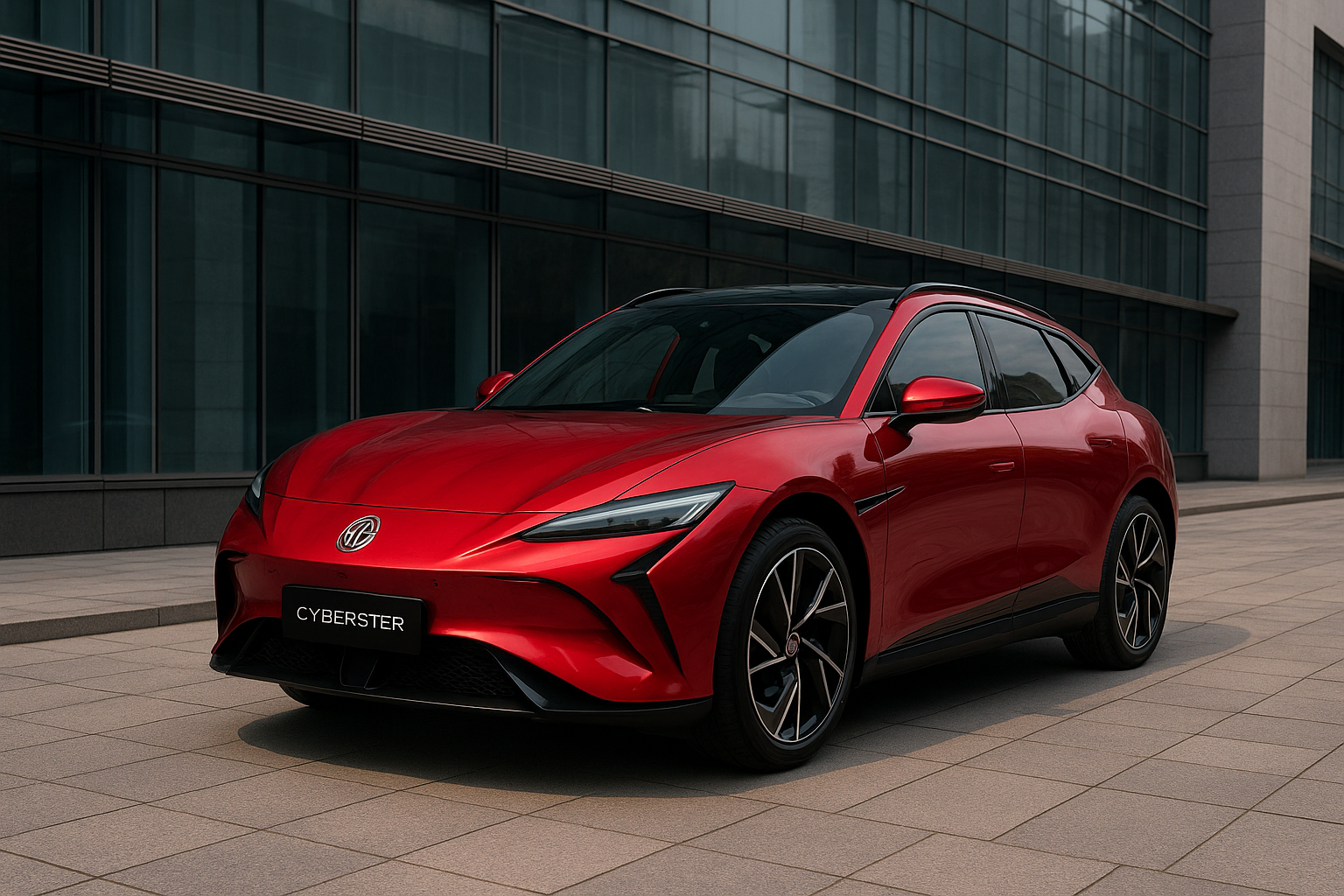
A Bold Step Into India’s Luxury EV Market
So, MG is about to bring out something pretty cool — the Cyberster, a premium electric SUV, expected to launch around July 2025. It’s their way of stepping up in India’s electric vehicle game and offering something that’s not just green, but also stylish and packed with tech.
EVs are getting popular here, and MG wants to be part of that wave, especially for folks who want a good-looking, comfy ride that’s loaded with modern features.
Striking Design Meets Cutting-Edge Technology
We don’t have all the info yet, but the Cyberster looks sharp. Think sleek and sporty, something that’ll catch eyes on the road.
Inside, expect lots of screens, smart features, and safety tech — basically, everything you’d want to make your drive smooth and fun. Whether it’s a quick city run or a weekend escape, this car’s aiming to make every trip enjoyable.
Performance That Packs a Punch
If you’re paying for a premium electric SUV, you want it to perform, right? While details are still under wraps, MG usually doesn’t disappoint. Expect a good driving range and enough power to make driving fun.
And with fast charging, you won’t be stuck waiting around forever — a big plus for busy folks.
What the Cyberster Means for Indian Consumers
This car means more choice for buyers who want a premium EV. The market is heating up, and it’s great because it gives you options that fit your style and budget.
MG is known for giving good value, so this might be a premium ride without the crazy premium price tag.
Growing Competition: A Win for Buyers
More companies entering the EV space means the competition’s getting fierce — Tata, Mahindra, Hyundai, and now MG all want your attention.
That means better cars, better prices, and more charging stations popping up, making EVs easier to own.
MG’s Vision for India’s EV Future
The Cyberster is just the start for MG. They’re clearly aiming to be a big player in India’s EV scene by giving buyers stylish, tech-packed cars.
As India moves toward greener transport, cars like this will help make electric vehicles the new normal.
Article By
Sourabh Gupta
Blog
India’s EV Market Heats: More Players, More Competition

The Electric Vehicle Battle Is Just Getting Started
You know how things are changing fast with electric vehicles here in India? Well, it’s no longer just a couple of companies in the game. Tata and Mahindra have been leading for a while, but now Maruti, Toyota, and Hyundai are jumping in too. It’s turning into a proper race, and that’s great news for anyone thinking about buying an EV.
More players mean more choices, and when companies compete, it usually means better deals and cooler cars for us.
New Entrants Bring Fresh Energy
Maruti Suzuki is like the go-to brand for most Indian families because their cars are affordable and reliable. Now, if they start selling EVs, it’s going to make electric vehicles a lot more reachable for everyday folks.
Then you have Toyota and Hyundai, which have been working on electric cars globally for years. They’re bringing that know-how to India, which means better technology and cars designed to handle our roads and conditions.
This fresh blood is going to push everyone to do better, which is a win for all of us.
What This Means for Consumers
For buyers, this is the best time to consider an EV. You’ll get a wider choice of vehicles — from simple and affordable models to fancy ones packed with features.
Also, with so many companies competing, expect better batteries that last longer, faster charging times, and prices that won’t scare you away.
Charging stations will become more common, making it easier to own and use an EV without stress.
Challenges for Established Players
Tata and Mahindra have done well so far, but now the heat’s on. They’ll need to keep improving their cars and customer service to stay ahead.
More competition means prices might get friendlier, and cars will keep getting better, which is good news for everyone.
The Road Ahead: A Win for India’s Green Future
All this competition will speed up EV adoption, which means cleaner air and less pollution.
With more companies investing in EVs, we’ll see more charging points, better batteries, and more jobs related to green technology.
The future looks electric, and it’s shaping up to be an exciting ride.
Article By
Sourabh Gupta
Blog
Tata Motors Sets Sights on Dominating 50% of India’s EV Market
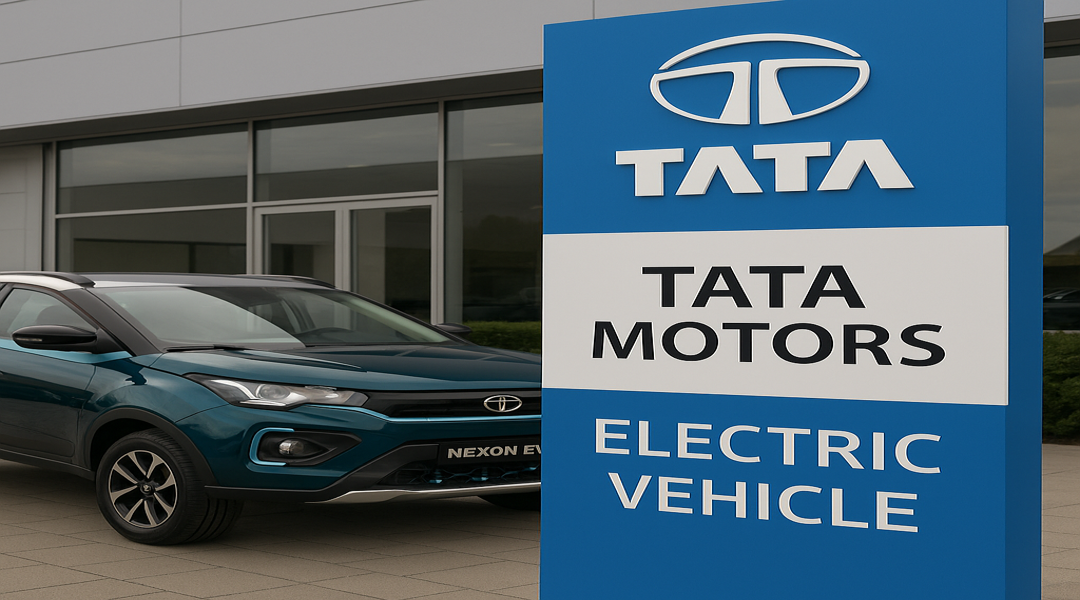
A Bold Ambition in a Growing Industry
Tata Motors isn’t just aiming to be in the EV race — they want to lead it. A recent ET Auto report says Tata wants to grab half of India’s electric vehicle market, which is a pretty big deal.
India’s EV scene is growing fast. More people are thinking about electric cars because petrol prices keep climbing, and folks want cleaner air. With all this happening, Tata’s shooting for the top spot, wanting to hold a massive share of the market.
Where Tata Motors Stands Today
Right now, Tata is the go-to name when it comes to EVs in India. The Nexon EV is one of the best-selling electric SUVs in the country. They’ve also got other models like the Tiago EV and Tigor EV that cover different budgets and needs.
But Tata knows it can’t just sit back and relax. Other brands like Mahindra, MG, and Hyundai are also pushing hard. Tata’s got to keep coming up with new stuff and get better if they want to stay ahead.
How Tata Plans to Achieve Its 50% Goal
So, how do they plan to take over half the market? They’ve got a few things lined up:
Expanding Its EV Lineup
Tata’s working on some cool new electric cars like the Harrier EV, Curvv EV, and the fancy Avinya. These options will give customers more choices, whether they prefer something small and practical or large and luxurious.
Building More Charging Stations
One of the biggest worries about EVs is charging. Tata’s working with Tata Power to set up more chargers across cities and towns. The easier it is to charge, the more people will want to buy EVs.
Making Batteries in India
Batteries are the priciest part of EVs, and importing them adds to the cost. Tata wants to make batteries right here in India, which should help bring prices down.
Going After Fleets and Government Buyers
Tata’s not just focusing on people buying cars for themselves. They’re also selling EVs to taxis, delivery companies, and government fleets. That’s a smart move because these buyers buy in bulk.
Challenges Ahead
It won’t be a smooth ride, though. Tata still has some bumps to cross:
- Battery supply might not always keep up with demand.
- Other companies are catching up fast.
- Not all towns have enough charging points yet.
- Convincing people outside cities to switch to EVs takes time.
The Road Ahead
Tata wants to own half of India’s EV market, and while that’s a huge goal, they have the right plan and the brand to pull it off. For buyers, this means better cars and more choices soon. For India, it’s a cleaner, greener future.
Article By
Sourabh Gupta
-

 Blog6 months ago
Blog6 months agoIndia’s Electric Vehicle Market Forecast to 2028 A Rapidly Growing Industry
-

 Blog12 months ago
Blog12 months agoTop 10 Electric Vehicles of 2024: A Comprehensive Guide
-

 Blog1 year ago
Blog1 year agoImpact of Electric Vehicles on the Environment and Pollution
-

 Blog12 months ago
Blog12 months agoTop 5 best electric vehicles Under $30,000: Affordable Choices for 2024
-

 EV news6 months ago
EV news6 months ago2025 Might Be the Time of EVs in India, Drove by SUV Dispatches
-
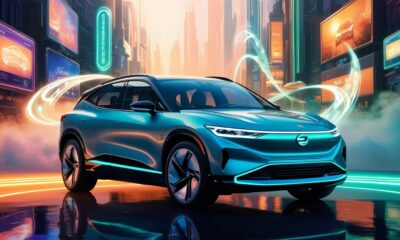
 Blog1 year ago
Blog1 year agoEV Charging Technology: Leading the Electric Vehicle Innovations in 2024
-

 EV news9 months ago
EV news9 months agoOla Electric Offers Massive Festive Discounts on Scooters Starting at ₹50,000
-

 Blog6 months ago
Blog6 months agoMahindra BE 6 An Intense Move toward the Fate of Electric Versatility




